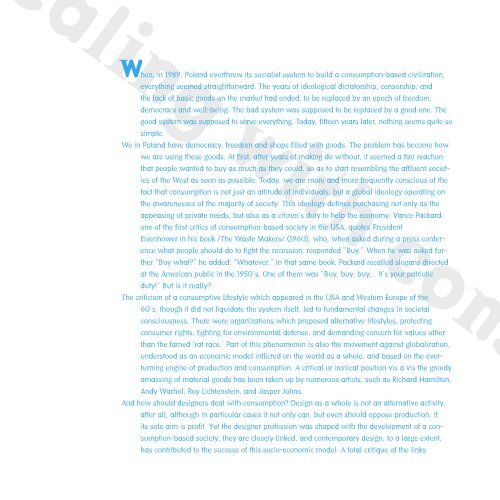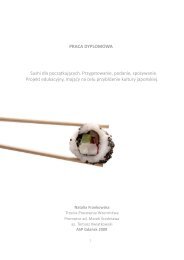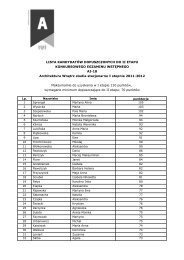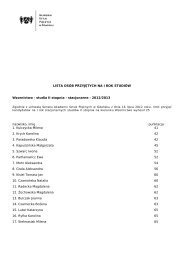katalog polskich projektów (pfd.4,7Mb) - Akademia Sztuk Pięknych ...
katalog polskich projektów (pfd.4,7Mb) - Akademia Sztuk Pięknych ...
katalog polskich projektów (pfd.4,7Mb) - Akademia Sztuk Pięknych ...
Create successful ePaper yourself
Turn your PDF publications into a flip-book with our unique Google optimized e-Paper software.
aling with cons<br />
When, in 1989, Poland overthrew its socialist system to build a consumption-based civilization,<br />
everything seemed straightforward. The years of ideological dictatorship, censorship, and<br />
the lack of basic goods on the market had ended, to be replaced by an epoch of freedom,<br />
democracy and well-being. The bad system was supposed to be replaced by a good one. The<br />
good system was supposed to serve everything. Today, fifteen years later, nothing seems quite so<br />
simple.<br />
We in Poland have democracy, freedom and shops filled with goods. The problem has become how<br />
we are using these goods. At first, after years of making do without, it seemed a fair reaction<br />
that people wanted to buy as much as they could, so as to start resembling the affluent societies<br />
of the West as soon as possible. Today, we are more and more frequently conscious of the<br />
fact that consumption is not just an attitude of individuals, but a global ideology operating on<br />
the awarenesses of the majority of society. This ideology defines purchasing not only as the<br />
appeasing of private needs, but also as a citizen’s duty to help the economy. Vance Packard,<br />
one of the first critics of consumption-based society in the USA, quotes President<br />
Eisenhower in his book /The Waste Makers/ (1960), who, when asked during a press conference<br />
what people should do to fight the recession, responded “Buy.” When he was asked further<br />
“Buy what” he added: “Whatever.” In that same book, Packard recalled slogans directed<br />
at the American public in the 1950’s. One of them was “Buy, buy, buy... It’s your patriotic<br />
duty!” But is it really<br />
The criticism of a consumptive lifestyle which appeared in the USA and Western Europe of the<br />
60’s, though it did not liquidate the system itself, led to fundamental changes in societal<br />
consciousness. There were organizations which proposed alternative lifestyles, protecting<br />
consumer rights, fighting for environmental defense, and demanding concern for values other<br />
than the famed ‘rat race.’ Part of this phenomenon is also the movement against globalization,<br />
understood as an economic model inflicted on the world as a whole, and based on the everturning<br />
engine of production and consumption. A critical or ironical position vis a vis the greedy<br />
amassing of material goods has been taken up by numerous artists, such as Richard Hamilton,<br />
Andy Warhol, Roy Lichtenstein, and Jasper Johns.<br />
And how should designers deal with consumption Design as a whole is not an alternative activity,<br />
after all, although in particular cases it not only can, but even should oppose production, if<br />
its sole aim is profit. Yet the designer profession was shaped with the development of a consumption-based<br />
society, they are closely linked, and contemporary design, to a large extent,<br />
has contributed to the success of this socio-economic model. A total critique of the links

















